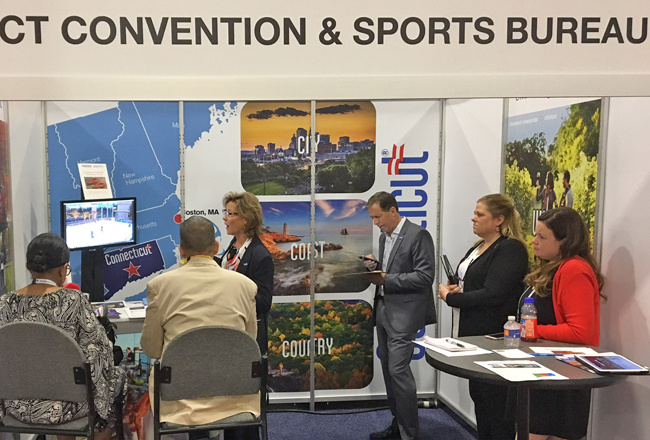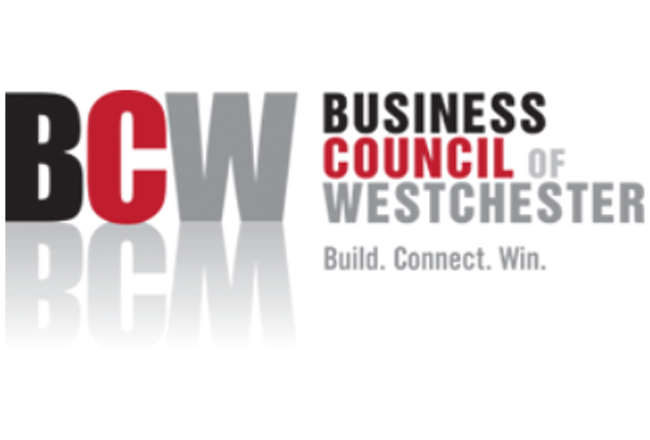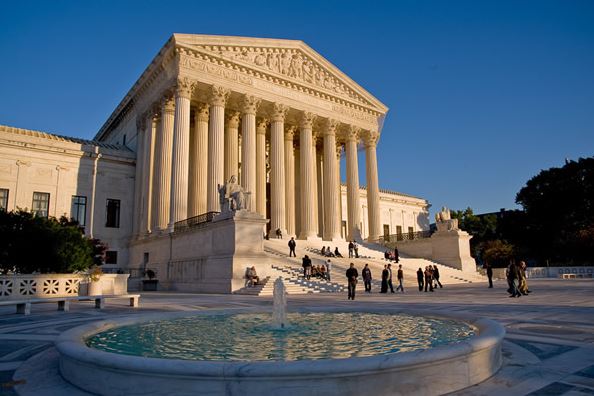Although the hospitality industry in Connecticut is, like most sectors, facing difficult times, H. Scott Phelps says that forward strides are being made.
“It can be a challenge representing the entire state of Connecticut with a staff of five,” said Phelps, president of the Connecticut Convention and Sports Bureau in Middletown, the official sales and marketing organization for the meetings and sports markets statewide. By comparison, “Providence has 23 people, the Boston Convention and Visitors Bureau has 36 and even Albany has 14.”

The numbers grow even more daunting when comparing those groups”™ respective annual budgets. The Providence Warwick Convention & Visitors Bureau in Rhode Island operates on about $4 million annually; the Greater Boston Convention and Visitors Bureau on $12 million; and New York”™s Albany County Convention & Visitors Bureau has an annual budget of about $2 million, Phelps said. His Connecticut organization, which had a budget of nearly $1 million in 2015, is now operating on an annual budget of $450,000 for the next two years.
“We have to get the most out of every dollar that goes through our office,”
Phelps said.
Created in 2012 when the state Department of Economic and Consumer Development consolidated several convention and visitor bureaus into one central body, the Connecticut organization is playing catch-up with its better-financed Northeast competitors, but officials there said that progress is being made.
Overall business this fiscal year, which ends on June 30, is on pace to finish about 15 percent higher than in the previous fiscal year, according to Phelps. For the 2016-17 fiscal year, visitors to Connecticut events spent about $61 million on hotels, dining, shopping and entertainment. For 2017-18, that figure should reach nearly $70 million, Phelps said.
That visitor spending supported more than 24,000 hospitality-related jobs, he added, and generated some $4.3 million in state sales and room tax revenue in the
last fiscal year.
In addition, while the organization generated $6.75 in sales tax for every $1 it spent to recruit events to the state in 2015, that sales tax figure has risen to $7.52, Phelps said.
He said that Fairfield County is increasingly benefiting from its location between Boston and New York City ”” especially cities like Norwalk, Bridgeport and Stamford, all on or near the Long Island Sound.
The activity is not limited to those locales. Bob Murdock, director of national accounts and director of sports marketing at the Connecticut Convention & Sports Bureau, noted that more sporting events have been drawn to Fairfield County.
On Aug. 2, a USA Softball girls fast-pitch tournament utilized six event venues, including Stratford”™s Frank DeLuca Hall of Fame Field, Short Beach Park, the Birdseye Complex and Johnson Field, and Trumbull”™s St. Joseph”™s High School field. Tournament staff, volunteers, players, officials and spectators booked approximately 1,250 hotel-room nights at nearly a dozen hotels in the Bridgeport and Milford area, and the tournament”™s total economic impact was approximately $1.08 million.
Murdock said he expects two forthcoming events to make a splash. The 2018 NCAA Division One Men”™s Ice Hockey Regional, hosted by Fairfield University and Yale University, will take place at Bridgeport”™s Webster Bank Arena on March 23-24, the first time the event has been held in Connecticut since 2014. The regional tournament is expected to be a sellout drawing more than 20,000 spectators, and Murdock said more than 1,000 hotel room nights have been booked in the Bridgeport area. The economic impact is expected to be over $1.4 million.
In addition, Trumbull BMX will host a USA
BMX National Championship Series event on June 22-24. Some 1,200 to1,500 bicycle motocross competitors are expected and more than 2,500 hotel room nights booked, with an economic impact estimated at about $1.9 million. The last USA BMX National event in Connecticut took place in 2012.
Murdock said the convention and sports bureau is also looking to capture religious conventions from the likes of New Jersey, New York City and Westchester County. He is now working with a Baptist pastor in Norwalk to bring the National Baptist Convention to Fairfield County.
“We love when something like that happens,” Murdock said. Given the bureau”™s limited resources, “It always helps to have someone on the inside.”
Indeed, Phelps said, the group is always looking for “champions” who can help bring events to the state. Such was the case with Ridgefield resident Luis Lopez, founder and owner of Latin Moves Dance Studio in Stamford, who brought the CT SalsaFest to the Hilton Stamford Hotel & Executive Meeting Center in May 2017. Lopez was one of several Connecticut businesspeople to receive a “Bring It Home Award” from Connecticut Convention and Sports Bureau in October.
The bureau is also looking forward to the opening of the $15 million Harbor Yard Amphitheater, under construction at the former home of the Bridgeport Bluefish baseball team and due to open in the spring of 2019. Although designed primarily to be a concert venue by concert promotion company Live Nation and SportsCenter of Connecticut, a Shelton-based attraction owned by Howard Saffan, Murdock said the bureau is “hopeful” that other types of events will be included.
“Even with concerts, people may not stay overnight, but they”™ll be spending money in Fairfield County,” he said.
“Any time a venue hosts multiple types of events, it”™s beneficial to the region,” Phelps added.
The city of Hartford”™s well-documented financial troubles could benefit events activity in Fairfield County promoted by the Connecticut Convention and Sports Bureau. The city, which flirted with declaring bankruptcy last year, is facing a $65 million deficit this year.
“They were very generous in the past when we would bring groups there,” Phelps said of Hartford officials. “They”™d pick up things like the police and garbage collection costs, and they had a leg up because of that. But they”™re not able to do that now.”
Regarding the state”™s convention and sports bureau and its $450,000 annual operating budget through mid-2019, Murdock said, “We”™re doing fairly well with what we have.”





















